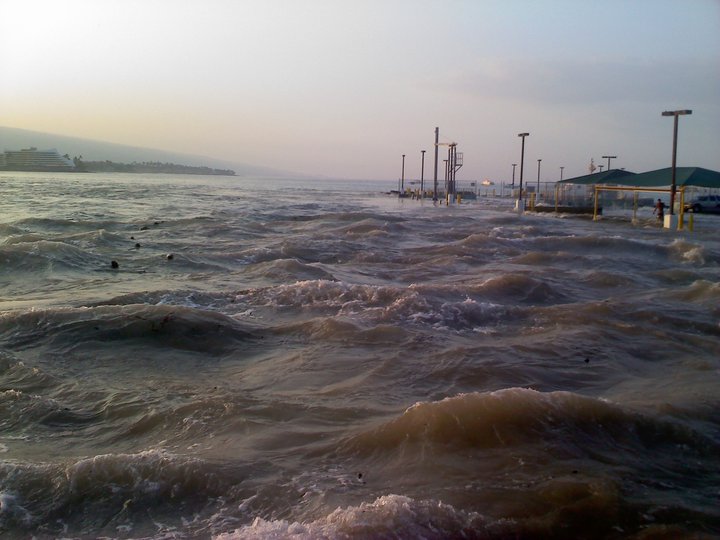Who'd a thunk that they have good sized waves in a lake.
Via Waterhound.

Who'd a thunk that they have good sized waves in a lake.
Via Waterhound.

[vimeo http://www.vimeo.com/21330411 w=465&h=262]
JOSH KERR & DAMIEN HOBGOOD from CIRCULATE on Vimeo.
Way of the Ocean: Australia, explores the connection between man and sea through a visual feast of poetic motion. The world’s largest island provides a breathtaking backdrop to some of the best surfing found on the planet. Since it was first introduced in the early 1900′s, surfing in Australia has become a mainstream pursuit and for this country devoted to the ocean lifestyle, it is more than a way of life. From the tropical paradise of the Great Barrier Reef down through the frigid Southern Ocean and up to the arid desert of the west, the film captures an intimate portrait of this unique land. Vibrant super 16mm and High Definition cameras bring to life the stunning visuals, set to a heart thumping original score. Welcome to the odyssey of your life. Welcome to Australia.
This documentary of epic proportions will be released
as a five part DVD series beginning in 2011 with
WAY OF THE OCEAN: Australia
Directed by Matt Kleiner
Produced by Circulate Motion Pictures

[vimeo 20977110 w=466 h=262]
[vimeo 21334616 w=466 h=262]
[vimeo 21338805 w=466 h=262]
[vimeo 21341868 w=466 h=262]
My Hawaii, 4 shorts by Shorty.

The crew of Neutrogena take advantage of flying fish bashing their heads onto the side of their boat. It looks like it's time to eat.
Via pressure-drop.us

His work says it all.
Via Geert.
Lasers, oh the horror!
Via the guy who threw me off his front page to have me linger outside in the cold with my hoof on the window looking in while all the others are having a jolly good time.
No water, no problem.
Where did I put my bottle of vodka?

The guy who made this video was very lucky.
Nature doesn't fuck around.
Gary quotes some bearded fellow from the O Dock.
Just some sailor from San Francisco. I wonder if he's any good?
Another guy who was deleted by the blogger who deleted me from his blog roll. More on that tomorrow.
Finally, the grand old man of sailing.

In the first census of its kind, research led by UC Davis and Stanford University found that there are far fewer white sharks off central California than biologists had thought.
The study, published in the journal Biology Letters, is the first rigorous scientific estimate of white shark numbers in the northeast Pacific Ocean. It is also the best estimate among the world's three known white-shark populations (the others are in Australia/New Zealand and South Africa).
The researchers went out into the Pacific Ocean in small boats to places where white sharks congregate. They lured the sharks into photo range using a seal-shaped decoy on a fishing line. From 321 photographs of the uniquely jagged edges of white sharks' dorsal fins, they identified 131 individual sharks.
From these data they used statistical methods to estimate that there are 219 adult and sub-adult white sharks in the region. (White sharks are classed as sub-adults when they reach about 8-9 feet in length and their dietary focus shifts from eating fish to mostly marine mammals. They are adults when they reach sexual maturity -- for males, that is about 13 feet long; for females, it is about 15 feet.)
"This low number was a real surprise," said UC Davis doctoral student Taylor Chapple, the study's lead author. "It's lower than we expected, and also substantially smaller than populations of other large marine predators, such as killer whales and polar bears. However, this estimate only represents a single point in time; further research will tell us if this number represents a healthy, viable population, or one critically in danger of collapse, or something in-between."
"We've found that these white sharks return to the same regions of the coast year after year," said study co-author Barbara Block, a Stanford University marine biologist and a leading expert on sharks, tunas and billfishes. "It is this fact that makes it possible to estimate their numbers. Our goal is to keep track of our ocean predators."
Satellite tagging studies have demonstrated that white sharks in the northeast Pacific make annual migrations from coastal areas in Central California and Guadalupe Island, Mexico, out to the Hawaiian Islands or to the "White Shark Café," a region of the open ocean between the Baja Peninsula and Hawaii where white sharks have been found to congregate -- and then they return to the coastal areas.
Text and Video by University of California - Davis

[vimeo http://www.vimeo.com/11386048 w=466&h=262]
5.6k Saturn Cassini Photographic Animation from stephen v2 on Vimeo.
Stephen van Vuuren - "This is fly-through of this photograph - photojournal.jpl.nasa.gov/catalog/PIA11141 - only a little brightness and contrast has been made to balance the moons with saturn's body. Do note that several thousand layers of many Cassini photographs were animated to make the fly-through work without any 3D CGI. The saturation is off due to lack of Flash Player ICM support."
Via, one of the most interesting bloggers around, Ole Eichhorn.
Benjamin Sanchis of Hossegor, France tows into a monster at Belharra Reef in the Basque Country. An Entry in the 2011 Billabong XXL Global Big Wave Awards. Video by Julien Roulland. For more info see www.BillabongXXL.com
Docking with style and grace.

[youtube http://www.youtube.com/watch?v=_81fMlXOdl8&fs=1&hl=en_US]An English accountant goes surfing.




Thank God my family is safe.

[vimeo 20030617 w=465 h=262]
Christie Glissmeyer Athlete Profile--OTV from EP Films on Vimeo.
A mini profile of, extreme paddler, Christie Glissmeyer.
Videos via The Telegraph.

Just say no to boards made in Chinese factories.
Support your local shaper or build your own board.
